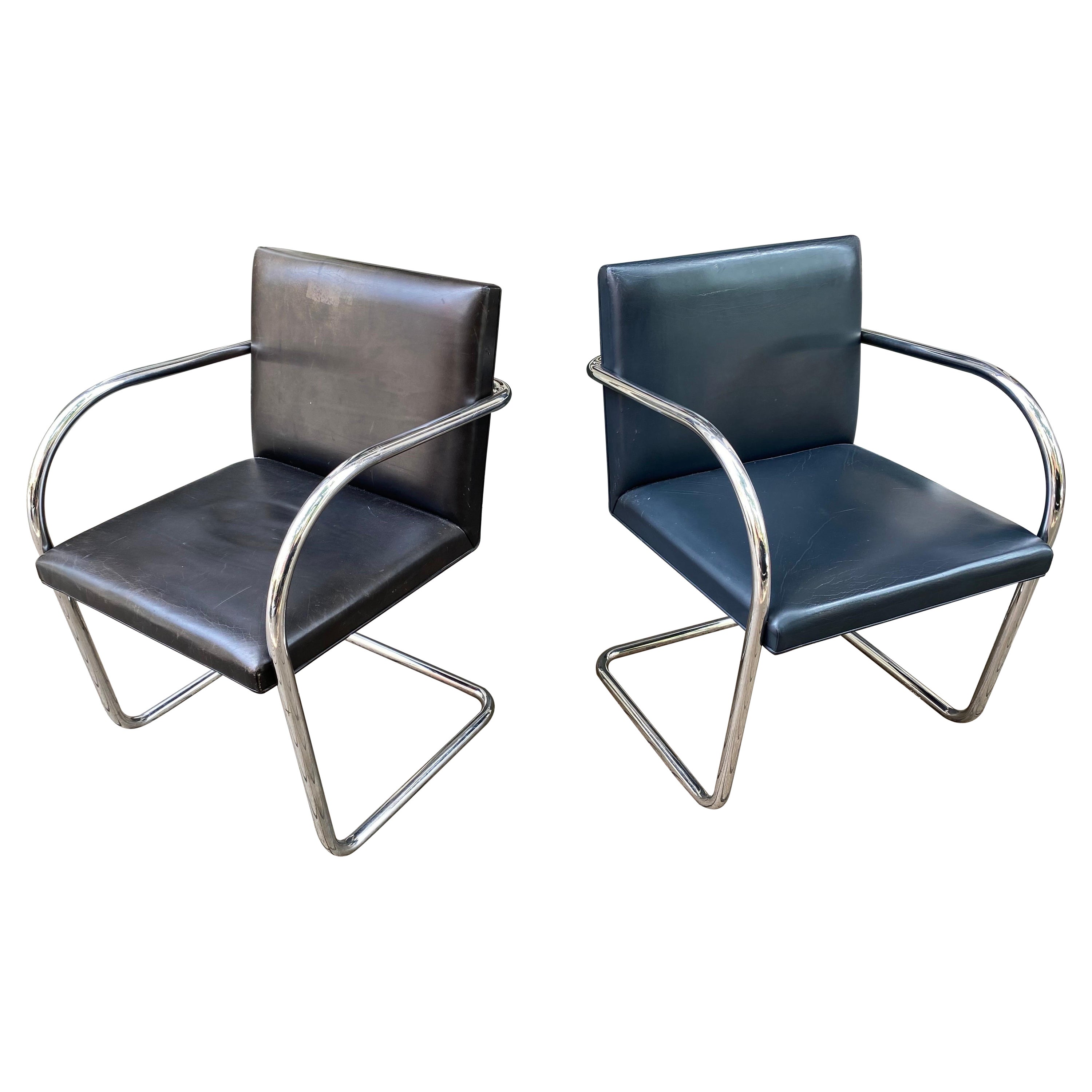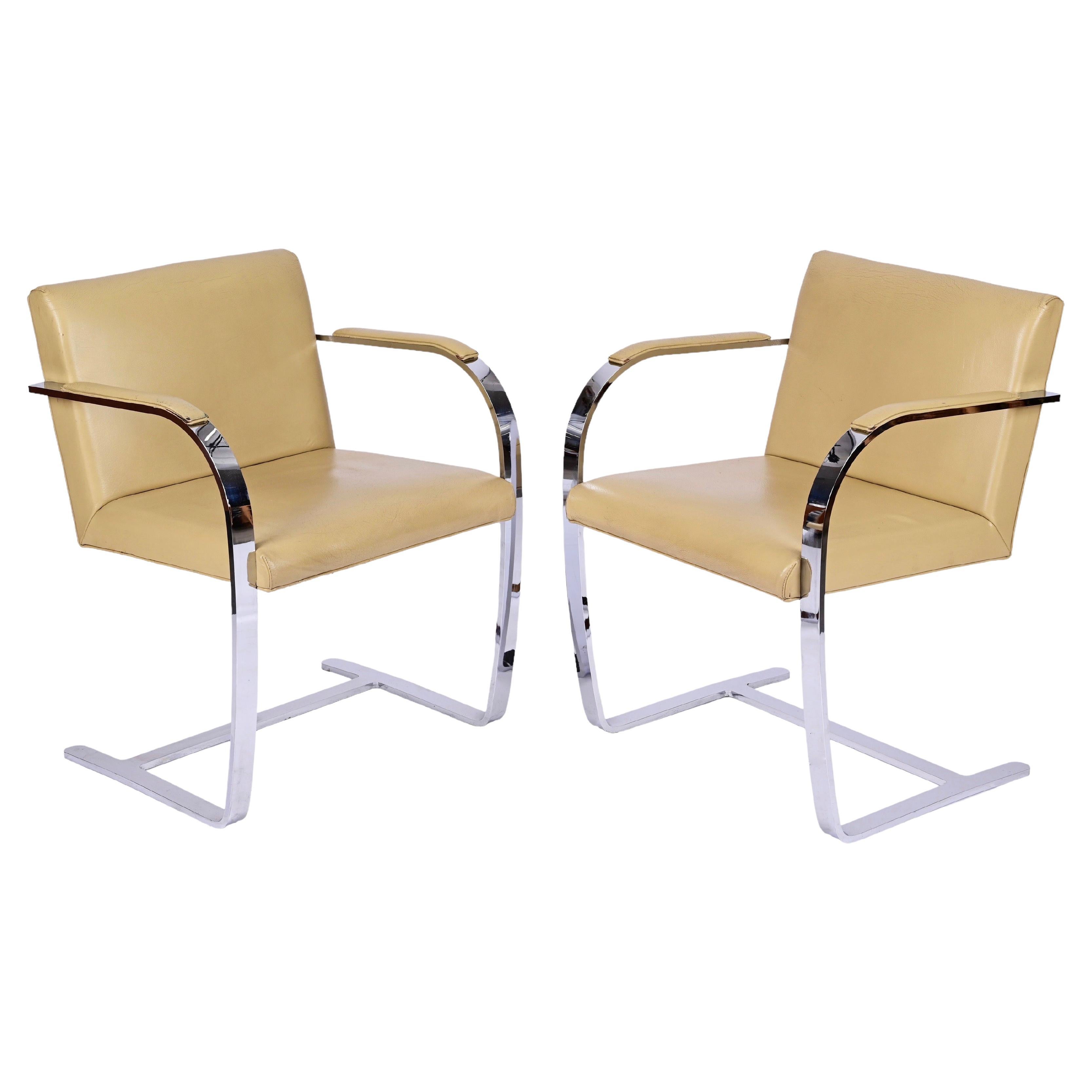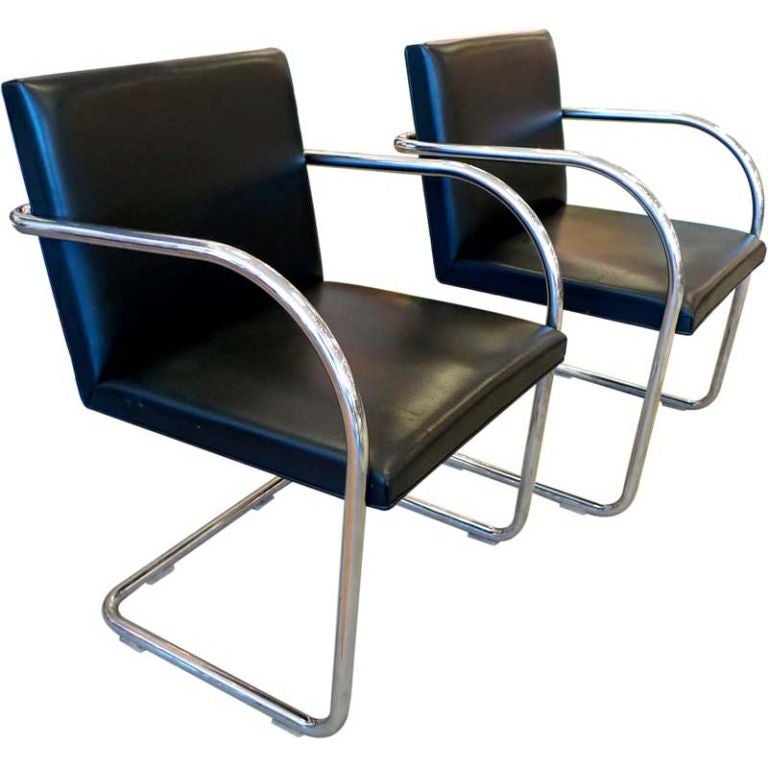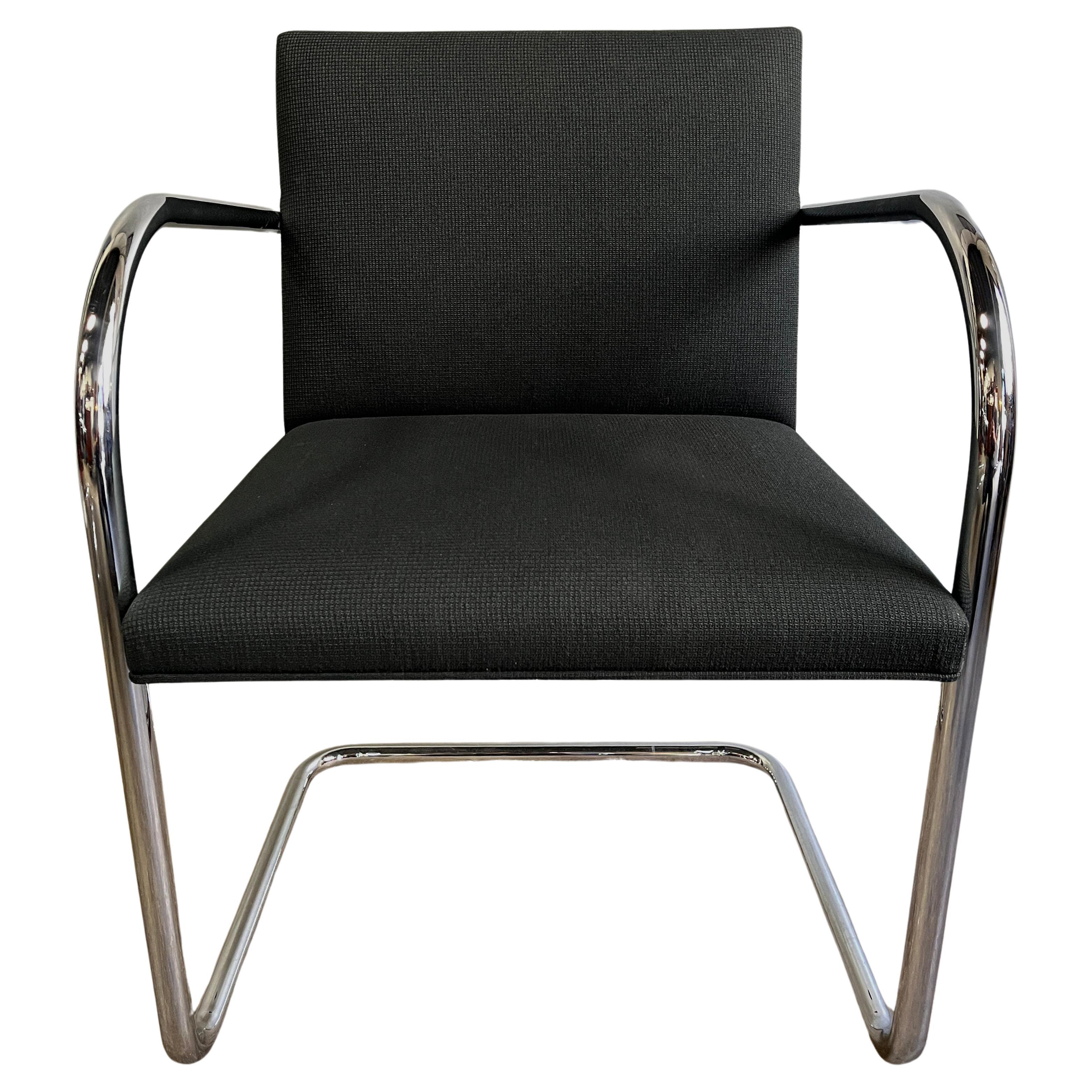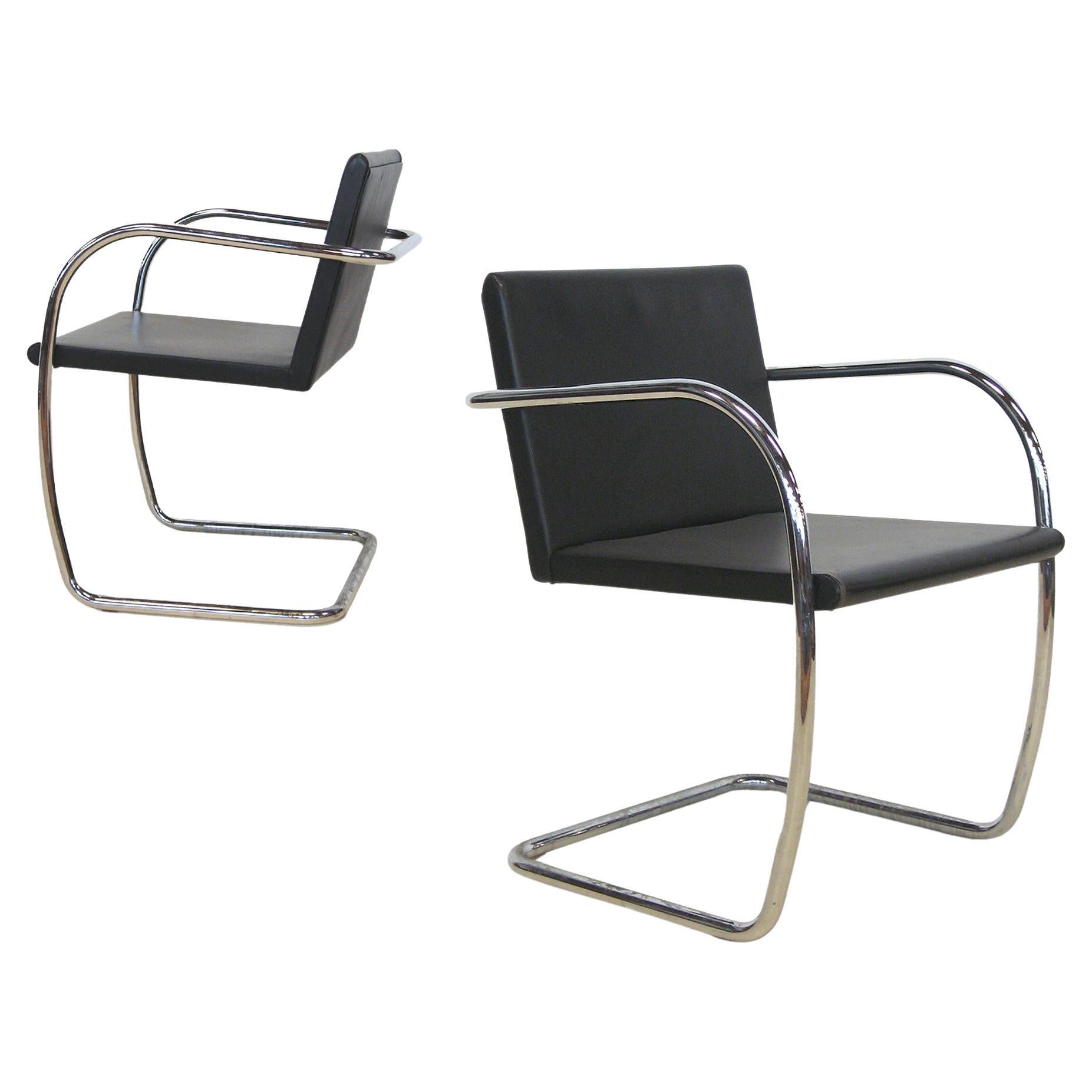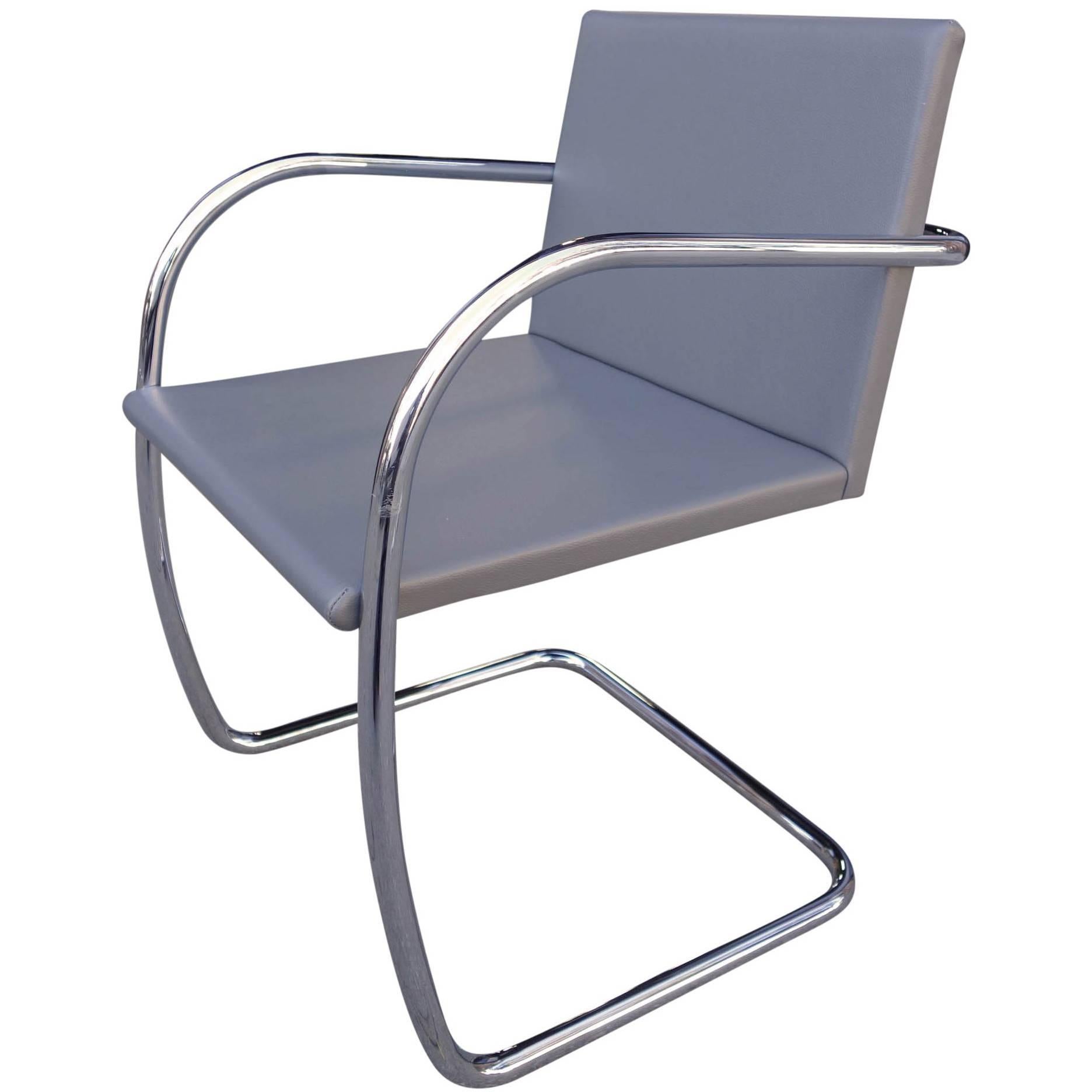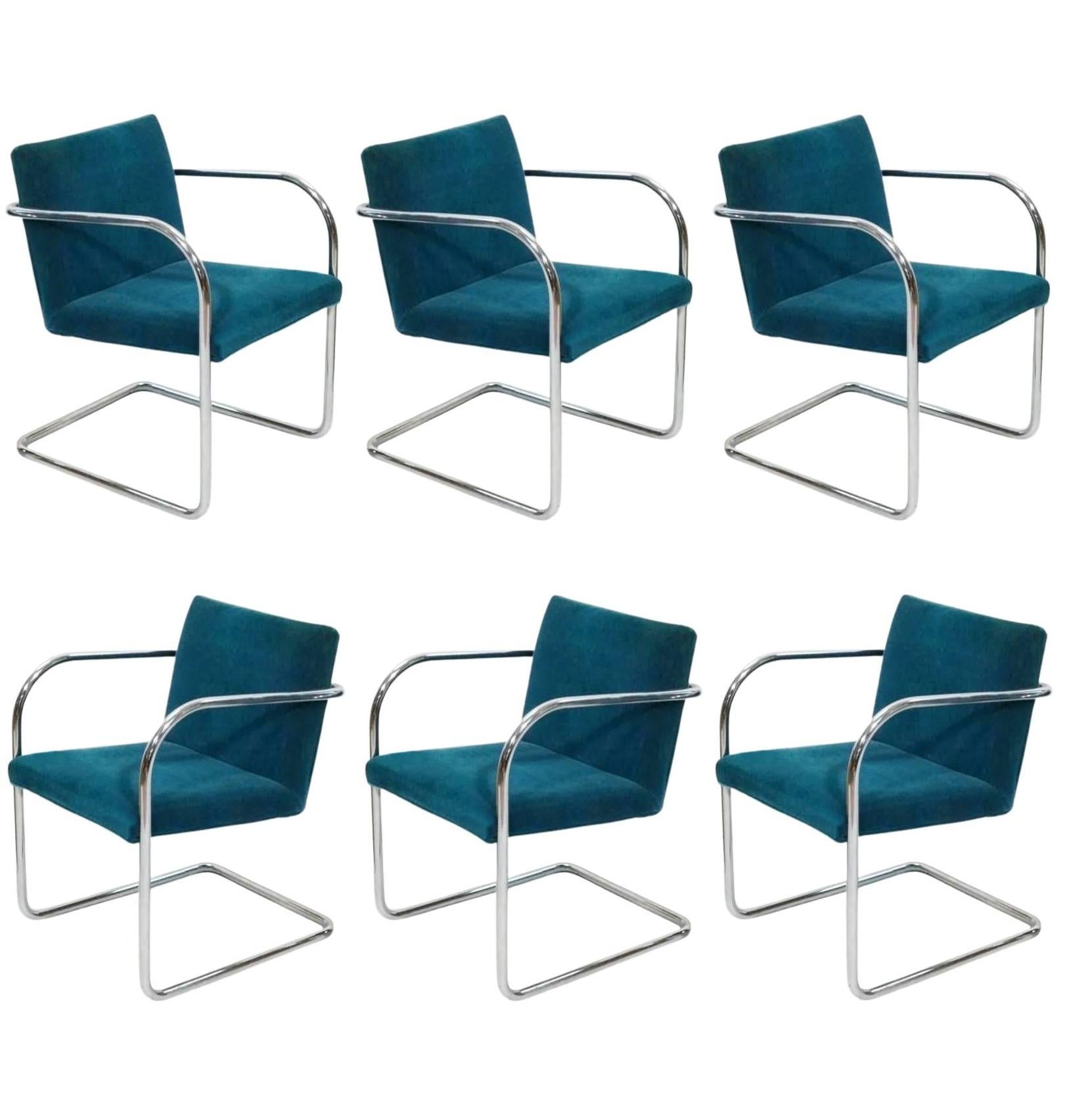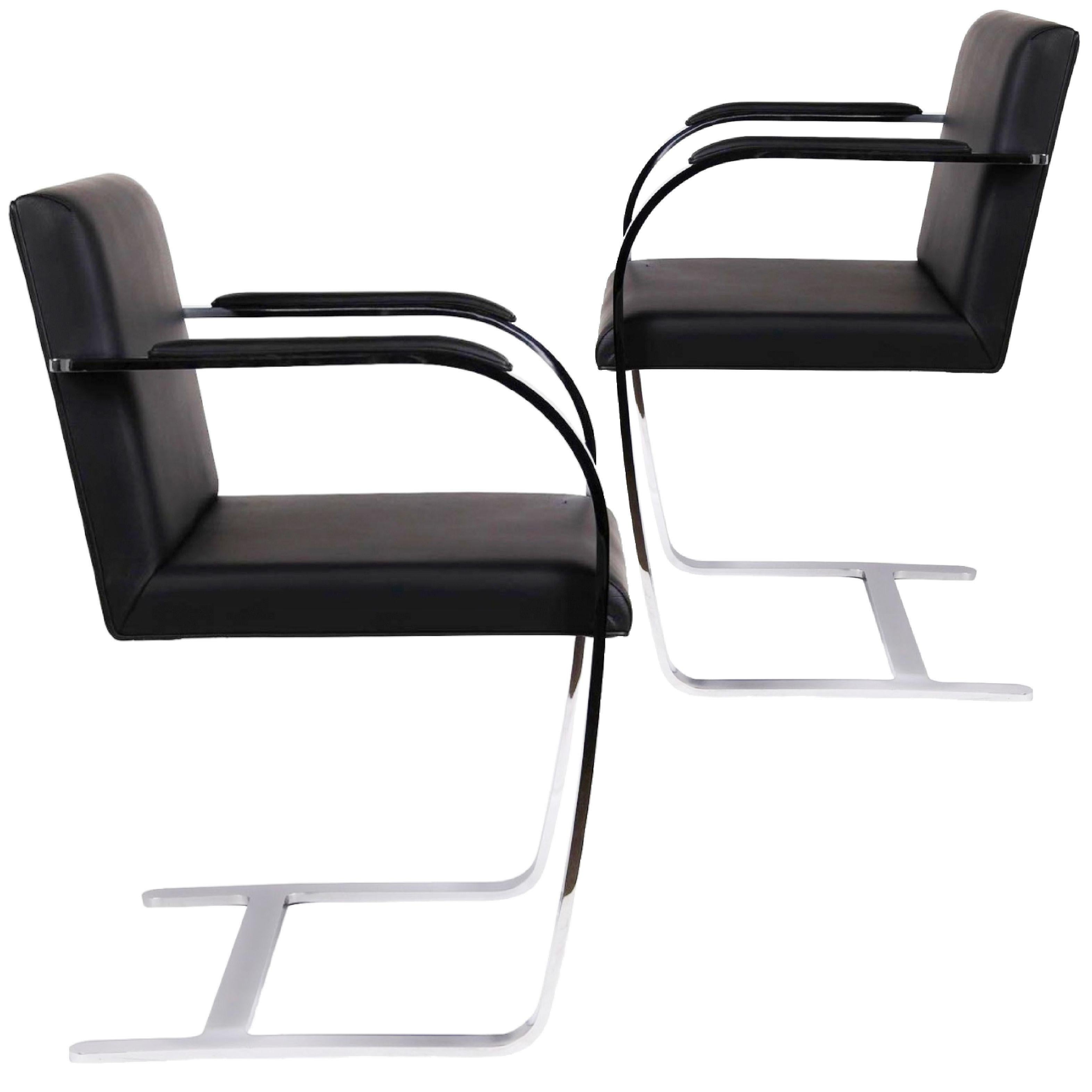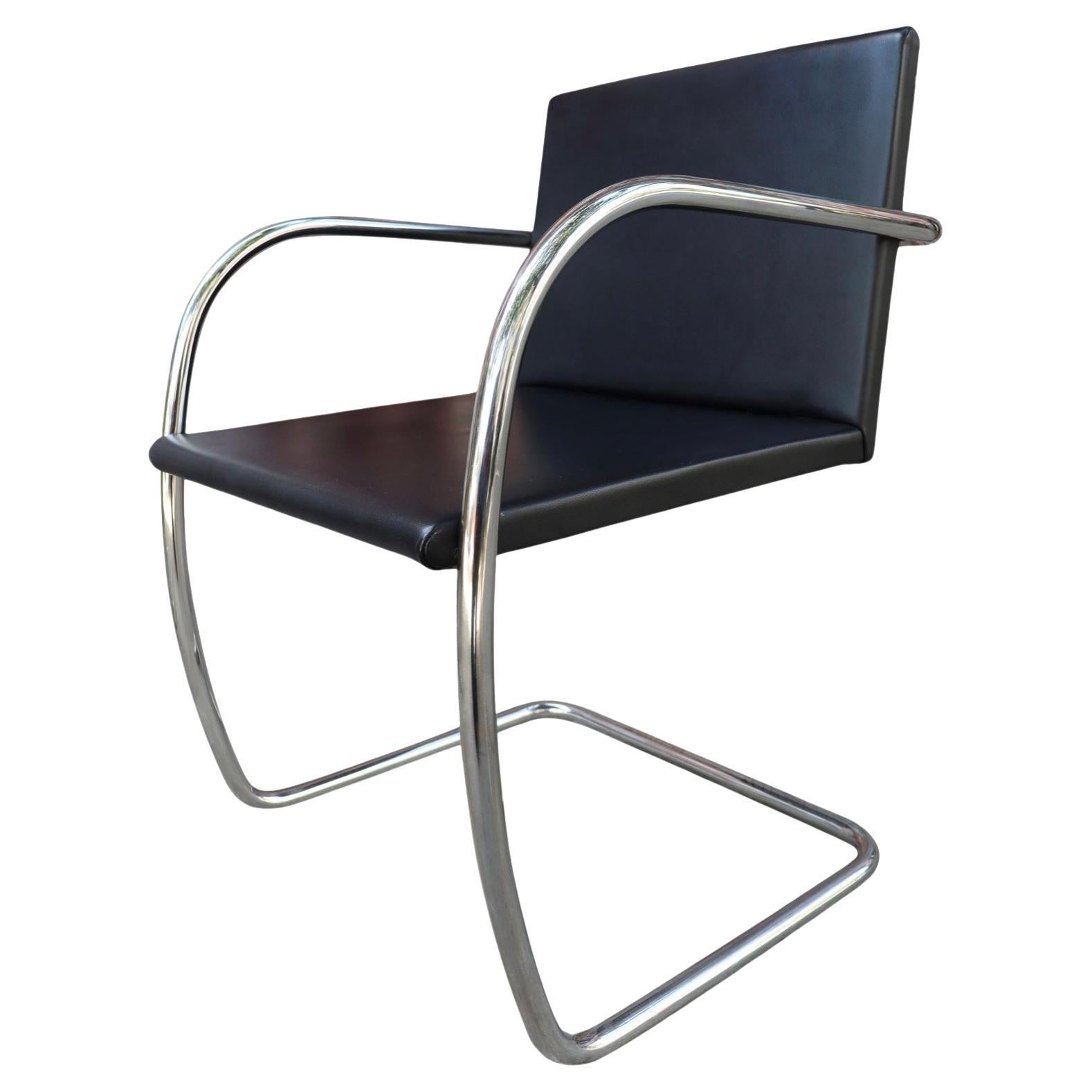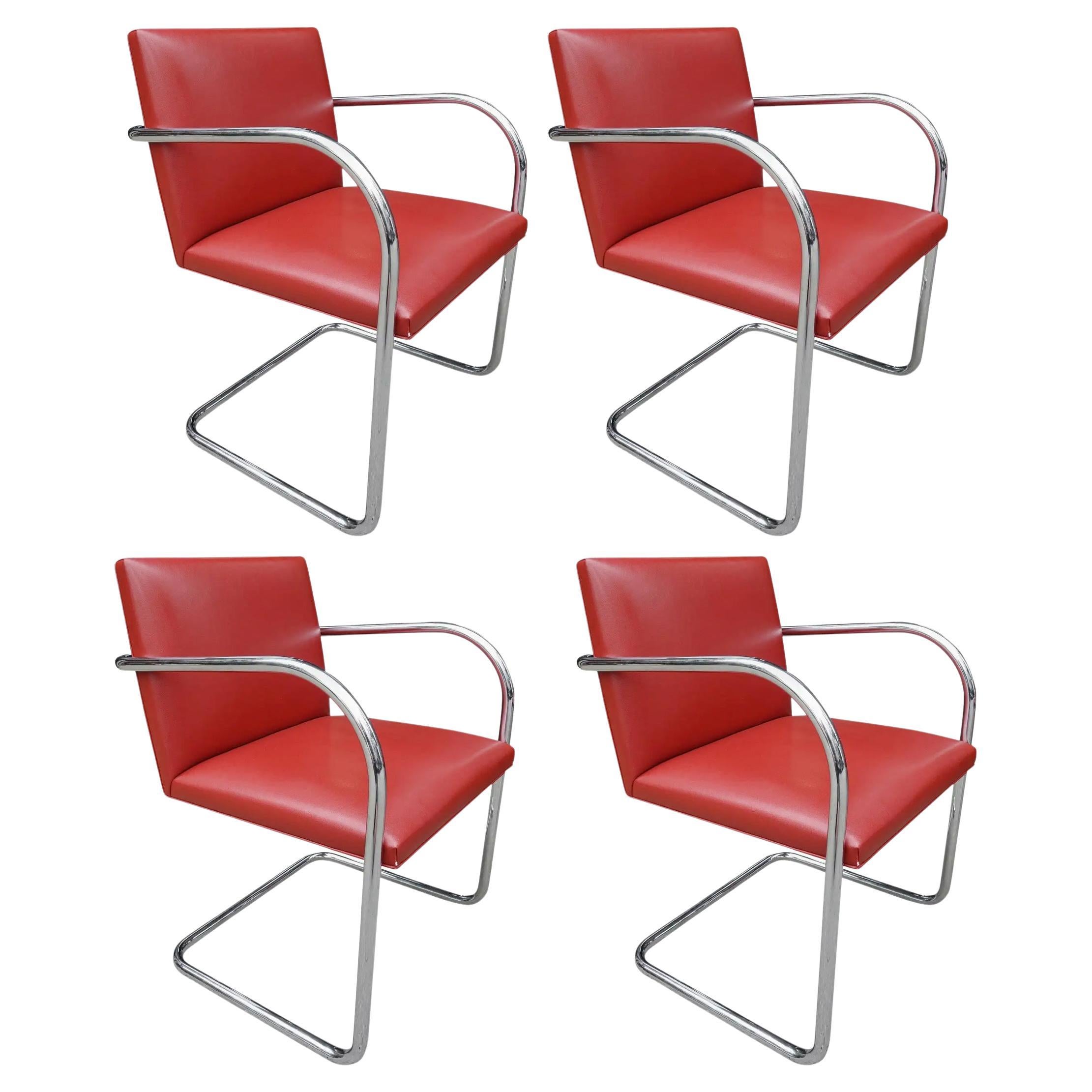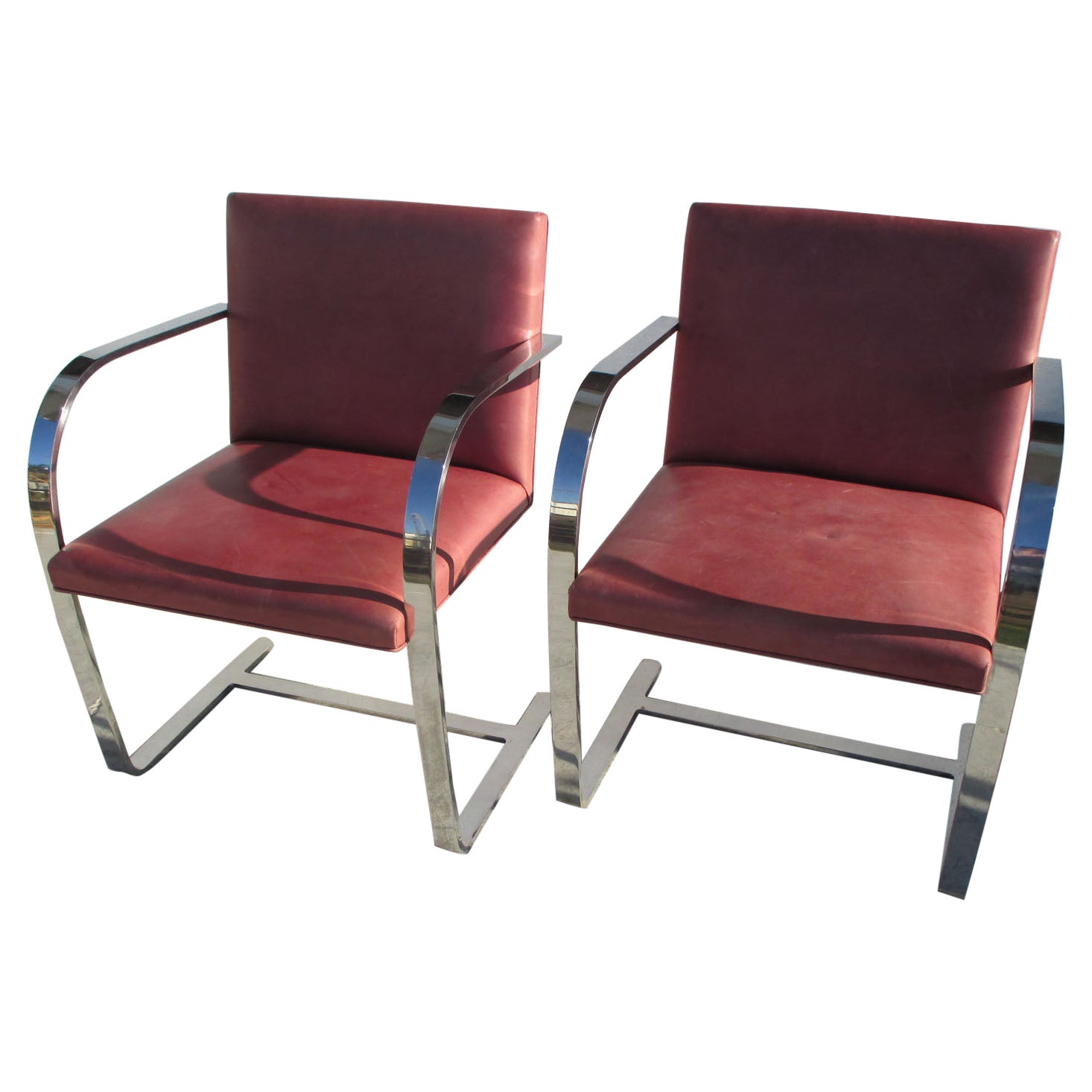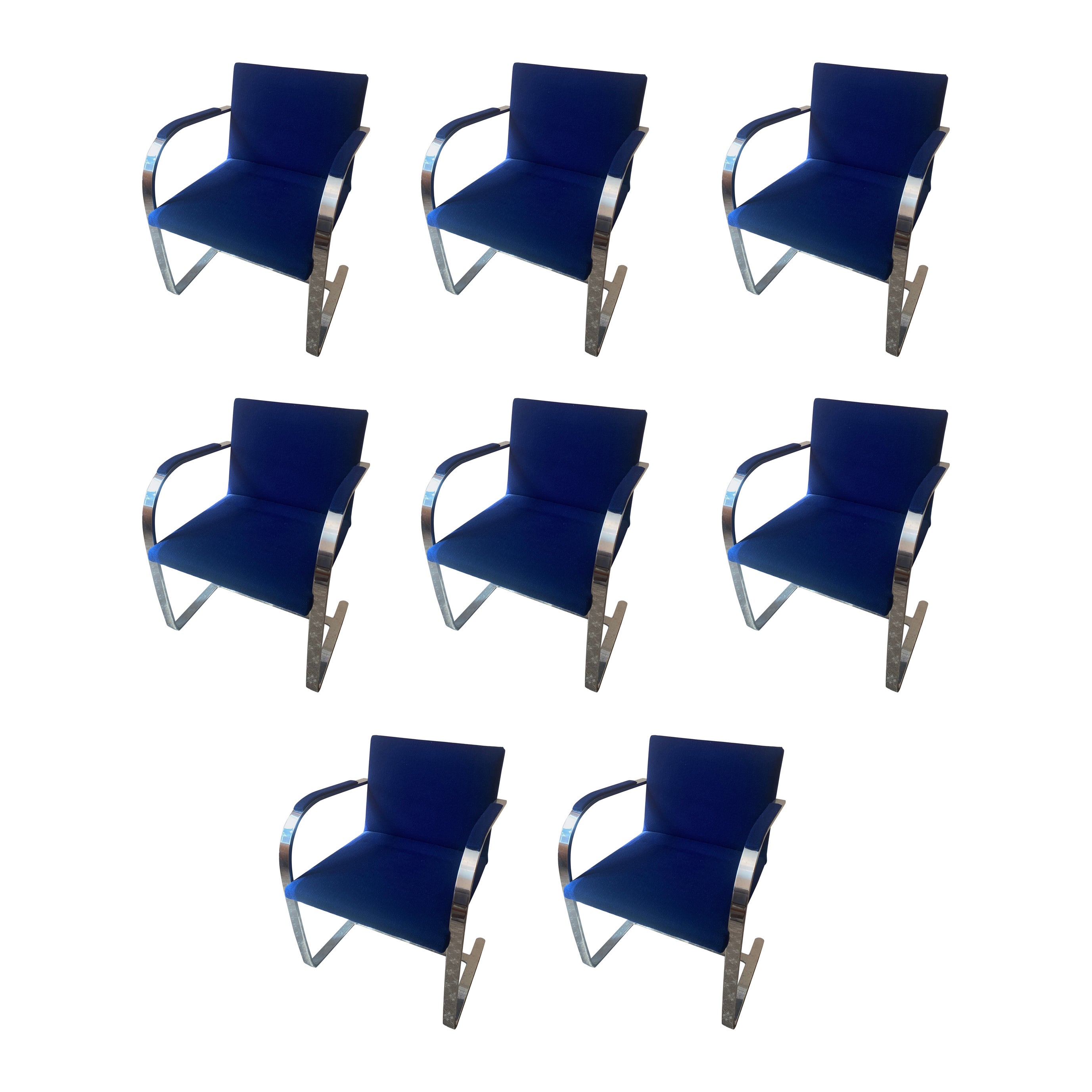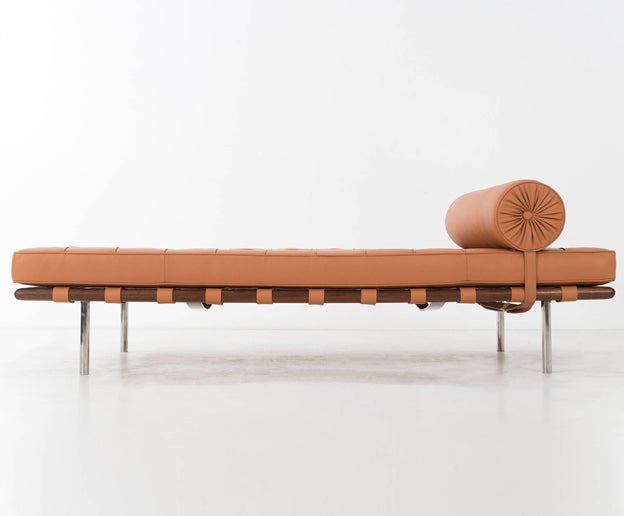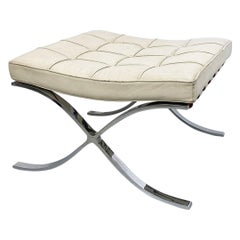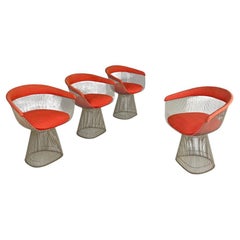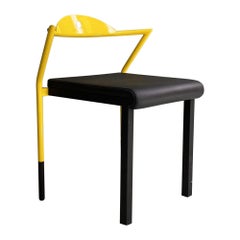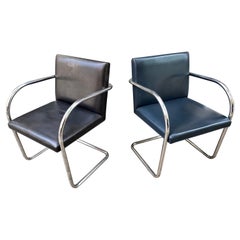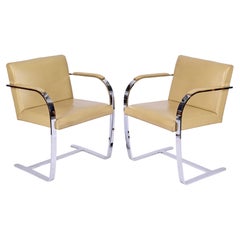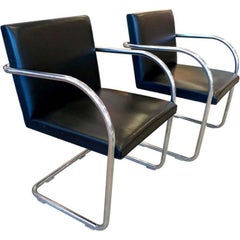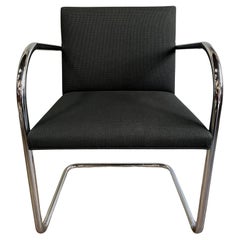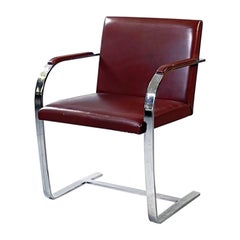
America Midcentury Brown Leather Brno 255 Chair by Mies Van Der Rohe Knoll, 1970s
View Similar Items
America Midcentury Brown Leather Brno 255 Chair by Mies Van Der Rohe Knoll, 1970s
About the Item
- Creator:Knoll (Designer),Ludwig Mies van der Rohe (Designer)
- Design:
- Dimensions:Height: 33.08 in (84 cm)Width: 22.84 in (58 cm)Depth: 20.48 in (52 cm)Seat Height: 17.72 in (45 cm)
- Style:Mid-Century Modern (Of the Period)
- Materials and Techniques:
- Place of Origin:
- Period:
- Date of Manufacture:circa 1970
- Condition:Minor losses.
- Seller Location:MIlano, IT
- Reference Number:1stDibs: LU4860226353622
Barcelona Daybed
With its low profile and clean lines, Ludwig Mies van der Rohe’s (1886–1969) Barcelona daybed (also known as the Pavilion daybed) wholly embodies the minimalist “form follows function” philosophy of the day.
Mies codesigned the daybed as well as a chair by the same name, along with Lilly Reich (1885–1947), his longtime collaborator and wife, in 1929 as part of the German Pavilion (or “Barcelona Pavilion”) at the International Exposition in Barcelona, Spain. At the time, Mies was already established as a prominent German architect and had recently been named the director of the Bauhaus. His contribution to the exposition was a deliberate choice to reinforce Germany’s pre–World War II status as a progressive nation at the forefront of modern design.
Although many other pavilions at the International Exposition were intended to serve as centers of knowledge and education, full of painting and sculpture to be admired and discussed, Mies saw the Barcelona Pavilion as a respite from the activity surrounding it — a useful building, staged with useful furniture, without pretext. In fact, royals, dignitaries, and other important government officials were set to visit the German Pavilion after the exposition’s inauguration for a party, which meant the furniture took center stage as the group held court.
While there’s no question of Mies’s authorship of the Barcelona daybed and chair, he wasn’t without help. Reich, a German furniture designer in her own right, is often overlooked and uncredited in Mies’s contributions to furniture design, even though it is believed that she assisted him for over 10 years on some of his signature designs.
A year later, the American architect Philip Johnson asked Mies (and Reich) to design and furnish his Manhattan apartment, thus introducing the Barcelona daybed stateside. Later, Johnson used the daybed when he built The Glass House, which is still located in New Canaan, Connecticut. Johnson's structure is a classic of mid-century modern architecture and was inspired by Mies’s Farnsworth House, located in Plano, Illinois, with its floor-to-ceiling windows, angular silhouette and sparse interior. Of course, being low to the ground without a back and a single balustrade as an armrest, the daybed allows for uninterrupted views of both the interior and exterior of the space.
Still in production by Knoll, the original manufacturer, the Barcelona daybed — with its tubular stainless-steel legs and African mahogany wood frame — remains an indelible symbol of mid-century modern design.
Knoll
As a company that produced many of the most famous and iconic furniture designs of the 20th century, Knoll was a chief influence in the rise of modern design in the United States. Led by Florence Knoll, the firm would draw stellar talents such as Ludwig Mies van der Rohe and Eero Saarinen into its compass. Their work would help change the face of the American home and office.
The company was formed in 1938 by the German immigrant Hans Knoll. He first worked with his fellow ex-pat, the Danish designer Jens Risom, who created furniture with flowing lines made of wood. While Risom served in World War II, in 1943 Knoll met his future wife, Florence Schust. She had studied and worked with eminent emigré leaders of the Bauhaus, including Mies, Walter Gropius and Marcel Breuer. She won Knoll over with Bauhaus notions of industrial arts, and an aesthetic that featured flat and tubular metal frames and angular forms. When Hans died in a car crash in 1955, Florence Knoll was appointed head of the company. It was as much through her holistic approach to design — a core division of the firm was dedicated to planning office systems — as Knoll's mid-century modern furnishings themselves that she brought about the sleek and efficient transformation of the American workplace.
Today, classic Knoll furnishings remain staples of modern design collections and decor. A history of modern design is written in pieces such as the elegant Barcelona chair — created by Mies and Lilly Reich — Saarinen’s pedestal Tulip chair, Breuer’s tubular steel Wassily lounge chair and the grid-patterned Diamond chair by Harry Bertoia.
As you can see from the collection of these designs and other vintage Knoll dining chairs, sofas and tables on 1stDibs, this manufacturer's offerings have become timeless emblems of the progressive spirit and sleek sophistication of the best of modernism.
More From This Seller
View AllVintage 1980s American Modern Armchairs
Metal
Vintage 1970s Italian Mid-Century Modern Ottomans and Poufs
Steel
Vintage 1970s American Modern Chairs
Metal
Vintage 1970s Italian Space Age Armchairs
Metal
Vintage 1970s Italian Modern Chairs
Metal
Vintage 1970s Italian Mid-Century Modern Armchairs
Metal
You May Also Like
Vintage 1980s American Mid-Century Modern Armchairs
Chrome
Mid-20th Century Italian Mid-Century Modern Chairs
Stainless Steel, Chrome
Vintage 1960s Italian Bauhaus Armchairs
Chrome
Mid-20th Century American Mid-Century Modern Chairs
Chrome
Vintage 1920s American Mid-Century Modern Armchairs
Stainless Steel
Mid-20th Century American Mid-Century Modern Chairs
Chrome
Recently Viewed
View AllRead More
Iconic Furniture Gives These 1stDibs 50 Rooms Timeless Appeal
A well-made armchair, table or pendant lamp can afford both comfort and convenience. An exceptional one can transform a space. See how the honorees on this year’s 1stDibs 50 list of top interior designers used standout pieces to create the kind of rooms you never want to leave.
Mies van der Rohe’s Barcelona Chair Shook Modernism and Charmed Hollywood
The enduring appeal of the Barcelona chair is in the details.
